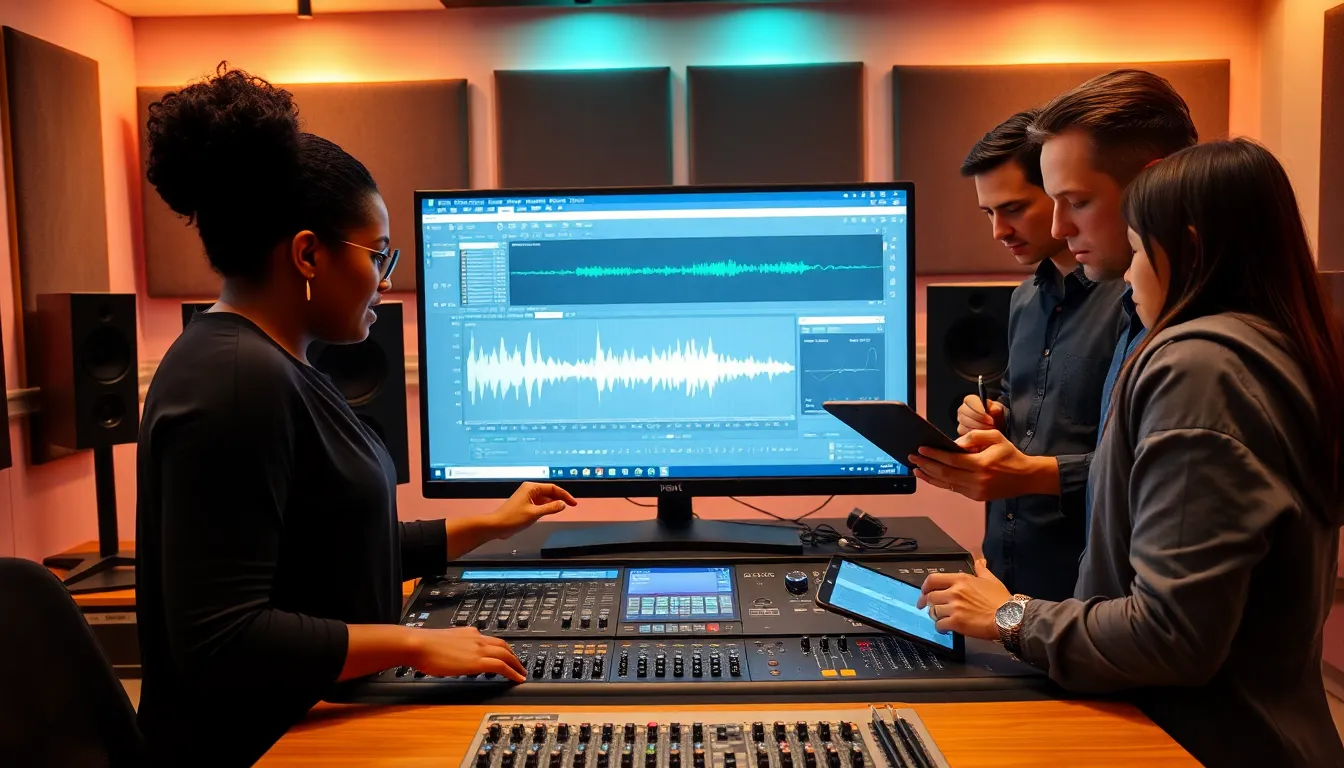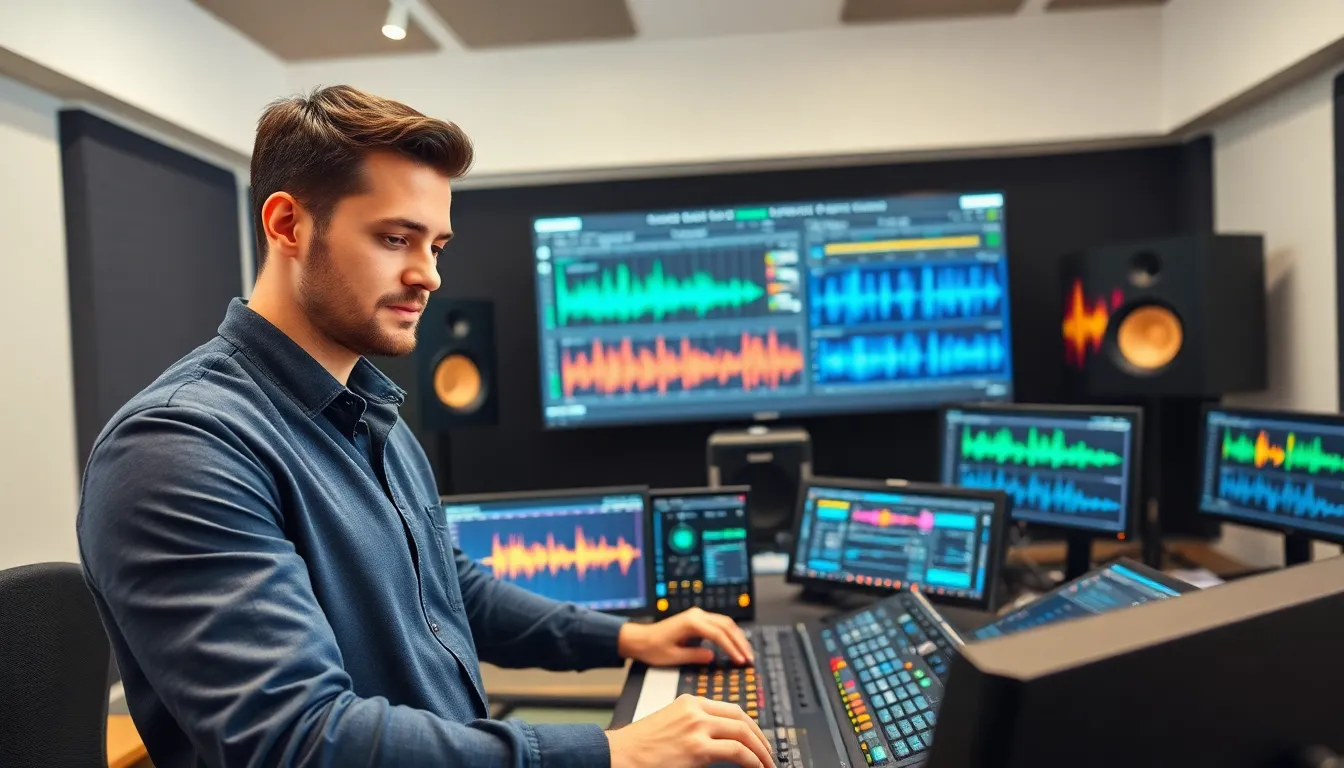Imagine your favorite song suddenly jumping from a whisper to a shout without warning, talk about a jarring experience. Proper audio quality is essential for everything from podcasts to music albums. That’s where audio normalization software swoops in, cape flapping in the digital wind. This software fine-tunes your audio levels, helping each sound blend seamlessly for the ultimate listening pleasure. Whether you’re a seasoned sound engineer or an enthusiastic newbie, understanding audio normalization can elevate your production game like never before. Let’s jump into the world of audio normalization, where good sounds become great.
Table of Contents
ToggleUnderstanding Audio Normalization

Audio normalization isn’t just a fancy term tossed around in sound studios. It’s a crucial process that adjusts the audio levels in a sound file to ensure consistency. Ever had a track where the chorus blasted your eardrums while the verses were barely audible? That’s a classic case of poor normalization.
At its core, audio normalization analyzes the loudest peaks of a sound track and adjusts quieter sections accordingly. The goal? To strike that golden balance where all parts of a recording are audible and pleasant to hear. There are primarily two methods, peak normalization and loudness normalization.
Peak Normalization
Peak normalization looks at just the peak levels in an audio file. It raises the overall volume to the point where the loudest peak hits a specified level, commonly 0 dB. While this method works wonders for avoiding distortion, it may not fully use the dynamic range of the audio.
Loudness Normalization
On the other hand, loudness normalization takes into account how humans perceive sound. This approach adjusts the audio based on perceived loudness levels, leading to a more natural-sounding mix. It’s the preferred method in streaming services and broadcast media, ensuring a uniform listening experience for audiences.
The Importance of Audio Normalization in Production
You might wonder, why bother with audio normalization at all? The answer lies in the substantial impact it makes on sound quality across various platforms. Normalizing audio means creators can ensure that their listeners aren’t constantly fiddling with the volume knob.
Imagine if every podcast episode or music track maintained a consistent volume. This consistency creates a professional polish that attracts listeners and keeps them coming back.
In productions, whether for online streaming, radio, or live performances, everyone benefits from normalized sound.
Plus, audio normalization can save time during the mixing process. By establishing a consistent baseline, engineers can focus on creative choices rather than constant level adjusting.
Types of Audio Normalization Software
Navigating the landscape of audio normalization software might feel a bit like walking through a digital jungle. Fear not. Here’s a breakdown of the different types available:
- Standalone Software: These are dedicated audio normalization tools designed specifically for this function. They typically offer advanced options to customize the output to individual preferences.
- Digital Audio Workstations (DAWs): Most DAWs, like Ableton Live or Logic Pro, have built-in normalization features as part of their comprehensive editing capabilities. They’re perfect for those who want to perform multiple tasks under one roof.
- Music Streaming Services: Many platforms, such as Spotify and Apple Music, normalize audio tracks automatically. This ensures a consistent listening experience across songs and artists.
- Mobile Applications: With the rise of podcasts and mobile content, several apps offer audio normalization options on-the-go, allowing creators to adjust their audio anytime, anywhere.
Key Features to Look For in Audio Normalization Software
When choosing audio normalization software, it’s essential to equip yourself with tools tailored to your needs. Here are some key features to consider:
- User-Friendly Interface: No one wants to navigate a labyrinth just to normalize audio. A straightforward interface enhances productivity.
- Multiple Normalization Methods: Look for software that supports both peak and loudness normalization. This versatility ensures you can handle different audio formats and preferences.
- Batch Processing Capabilities: If managing multiple tracks, the ability to batch process files saves both time and effort.
- Integration with Other Tools: The best software plays well with others. Ensure compatibility with your existing audio editing tools.
- Real-Time Monitoring: This feature allows users to listen to changes immediately, making adjustments seamless.
Top Audio Normalization Software Options
Here’s a curated list of top audio normalization software options that stand out in the market:
- iZotope Ozone: Renowned for its exceptional audio mastering capabilities, Ozone includes advanced normalization features that cater to both novices and experts.
- WaveLab: This software offers an integrated environment for audio editing and mastering, along with advanced normalization options.
- Auphonic: A cloud-based service ideal for podcasters, Auphonic automatically normalizes audio while enhancing clarity and balance.
- Audacity: A free, open-source software that includes a normalization feature, perfect for users on a budget. It’s user-friendly and widely supported.
- Adobe Audition: Part of the Adobe Creative Cloud suite, this powerful audio editing software provides robust normalization tools, making it suitable for professional audio work.
How to Choose the Right Audio Normalization Software
Choosing the right audio normalization software involves assessing personal needs, budget, and technical skills. Start by identifying whether you need a simple tool for quick adjustments or a comprehensive suite for extensive audio projects.
Budget also plays a crucial role. Free options like Audacity provide basic features, while premium choices like iZotope Ozone deliver advanced capabilities for seasoned pros.
Finally, don’t forget to check for compatibility with your existing setup. Ensure that the software aligns with your computer’s operating system and any other audio tools you use in your workflow.





